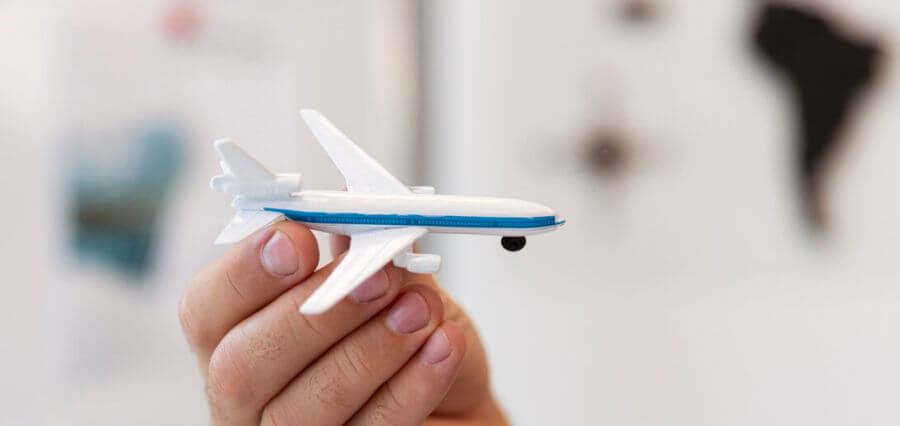If you’re an airplane enthusiast, starting an airplane leasing company might be a suitable business idea for you. However, starting an airplane leasing business is a complex yet rewarding endeavor that requires careful planning and execution.
This comprehensive guide will walk you through the key steps in planning your airplane leasing company business plan. By following the insights and recommendations provided, you can increase your chances of success in this competitive industry and build a thriving airplane leasing business.
1. Decide the Location
Selecting the right location is crucial for the success of your airplane leasing business. The ideal location should be easily accessible, visible to potential clients, and near target customers. The key factors you need to decide for your aircraft business location are:
- Visibility and foot traffic: A high-traffic location, such as near an airport or in a bustling business district, increases the chances of attracting potential clients.
- Accessibility: Ensure the location has ample parking, easy access to major roads, and proximity to public transportation for convenience.
- Proximity to target customers: Locating near airports, aviation hubs, or corporate offices frequently requiring air travel can significantly increase your customer base.
- Competitive landscape: While competition can be healthy, consider the benefits of a location with fewer competitors. This will allow you to stand out and potentially capture a larger market share.
One of the most important places you need for your business is a hangar to store your air crafts and as a space for everything related to your business. However, you must decide whether to rent a hanger space or construct and own one, so carefully evaluate each option’s financial implications and long-term benefits. Typically, renting requires lower upfront costs, but involves ongoing rental payments. Buying can provide ownership and potential appreciation, but involves significant upfront expenses.
If you’re going to rent, review the lease agreement thoroughly to understand the duration, potential rent increases, renewal options, and any restrictions or obligations. Ensure compliance with local lease laws and regulations to protect your business interests and avoid legal issues.
However, if you’re constructing your hangar, you must also consider construction costs like building materials, labor, permits, and utilities in your budget. By carefully considering these factors, you can make an informed decision that aligns with your financial goals and business strategy.
2. Choose Your Legal Structure
The legal structure of your airplane leasing company significantly impacts various aspects of your business, including tax obligations, personal liability, decision-making, financing options, the amount of paperwork and legal formalities required, and administrative requirements. The common legal structures you can choose from are:
- Companies: Companies are separate legal entities with limited liability, protecting the personal assets of owners and investors. They are suitable for businesses of all sizes and can attract funding from investors.
- Individual businesses: Sole traders or sole proprietorships are suitable for you if you’re self-employed or a small business with limited employees. However, they expose the owner to unlimited personal liability.
To choose the best structure, consider the number of co-founders, whether you plan to hire employees, and your expected revenue. While the legal structure can influence your business, a strong business idea can overcome potential challenges.
Research competitors’ most common structures in your industry and consult a lawyer or accountant to validate your choice. Switching legal structures later can be costly, so choosing the right one from the outset is advisable.
3. Determine Your Aircraft and Business Running Related Budget
You require a significant capital investment as aircraft purchases cost a lot. Here are some factors that can help you determine the cost:
- New vs. used aircraft: Consider the trade-offs between purchasing new aircraft, which has higher upfront costs but potentially lower maintenance expenses, and used aircraft, which has lower upfront costs but potentially higher maintenance expenses.
- Modifications and upgrades: You must factor in the costs of customizing aircraft to meet specific customer requirements or regulatory standards.
- Aircraft type: Choose aircraft that aligns with your target market and operational needs, such as small jets for private charters or larger planes for commercial leasing.
You also need to determine the budget for equipment and maintenance. You may need specialized equipment for routine maintenance, inspections, and repairs, such as engine testers, avionics tools, and hydraulic equipment. You must also buy advanced diagnostic systems to efficiently identify and troubleshoot aircraft problems. You also need to create well-equipped maintenance facilities for these with adequate workspace, lighting, and ventilation for their upkeep.
When running your company, you also need office equipment, computers, servers, and specialized software to manage aircraft leases, financial records, and customer information. You’ll also need to purchase essential office supplies such as printers, scanners, stationery, furniture, and communication systems like phones and the Internet.
Lastly, you need to calculate your budget for training and certification. Ensure your pilots have the necessary licenses, ratings, and experience to operate the specific aircraft types in your fleet. Train your maintenance staff to meet industry standards and regulatory requirements, including FAA Airframe and Powerplant (A&P) mechanics certifications.
Remember to tailor these investments to your business plan, market conditions, and financial resources. By carefully planning and allocating your initial investments, you can lay a strong foundation for your airplane leasing company.
4. Decide What Will Make Your Company Stand Out
Establishing a clear market positioning that differentiates your company from competitors is essential to succeed in the competitive airplane leasing market. This involves understanding your target customers’ needs and preferences and offering unique value propositions. The main points you need to consider are:
- Start-up vs. acquisition: Evaluate the pros and cons of starting a new business from scratch or acquiring an existing one. A startup offers greater control and flexibility, but requires significant upfront investment and time to build a customer base. An acquisition provides you with an immediate customer base, established operations, and industry knowledge, but may involve higher upfront costs.
- Market validation: Conduct thorough market research to validate your concept and ensure it meets customer demand. This involves interacting with potential customers to gather feedback and insights.
- Differentiation: Identify how your company can stand out from competitors. Consider pricing, service quality, geographic focus, or specialized offerings.
Identify your specific niche or customer segment that your competitors may overlook to stand out. Offer unique or complementary products or services that address unmet customer needs. Understand your competitors’ strengths, weaknesses, and strategies to identify opportunities for differentiation. Develop a long-term advantage based on proprietary technology, strong brand reputation, or exceptional customer service.
By carefully considering these factors and implementing effective strategies, you can establish a strong market position for your airplane leasing company and increase your chances of success.
Endnote
Starting an airplane leasing company involves a lot of planning and decision-making, along with significant capital. Choose the right location for your business, stay within established budget constraints, and identify what sets your business apart. If you approach it the right way and put in all your best efforts, this competitive industry can provide rich rewards to your airplane leasing company.














